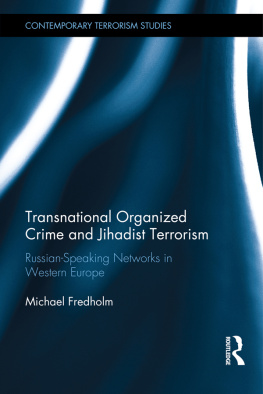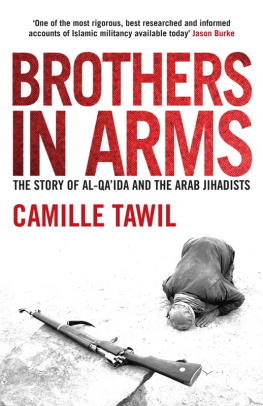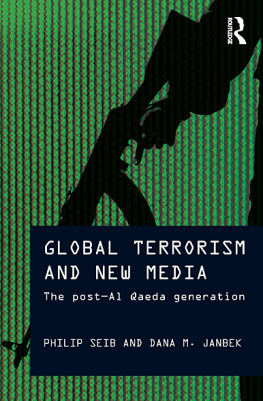COMMUNICATION IN GLOBAL JIHAD
This book conceptually examines the role of communication in global jihad from multiple perspectives. The main premise is that communication is so vital to the global jihadist movement today that jihadists will use any communicative tool, tactic, or approach to impact or transform people and the public at large. The author explores how and why the benefits of communication are a huge boon to jihadist operations, with jihadists communicating their ideological programs to develop a strong base for undertaking terrorist violence. The use of various information and communication systems and platforms by jihadists exemplifies the most recent progress in the relationship between terrorism, media, and the new information environment.
For jihadist organizations like ISIS and Al-Qaeda, recruiting new volunteers for the Caliphate who are willing to sacrifice their lives for the cause is a top priority. Based on various conceptual analyses, case studies, and theoretical applications, this book explores the communicative tools, tactics, and approaches used for this recruitment, including narratives, propaganda, mainstream media, social media, new information and communication technologies, the jihadisphere, visual imagery, media framing, globalization, financing networks, crimejihad nexuses, group communication, radicalization, social movements, fatwas, martyrdom videos, pop-jihad, and jihadist nasheeds.
This book will be of great interest to students and scholars of communication studies, political science, terrorism and international security, Islamic studies, and cultural studies.
Jonathan Matusitz is Associate Professor in the Nicholson School of Communication and Media at the University of Central Florida, USA. His research focuses on the role of communication in terrorism, symbolism in terrorism, and the globalization of culture and new media. Previous titles include Global Jihad in Muslim and Non-Muslim Contexts (2020), Online Jihadist Magazines to Promote the Caliphate: Communicative Perspectives (2019), Symbolism in Terrorism: Motivation, Communication, and Behavior (2015), and Terrorism & Communication: A Critical Introduction (2013).
POLITICS, MEDIA AND POLITICAL COMMUNICATION
Titles in this series include:
Communication in Global Jihad
Jonathan Matusitz
Democracy and Fake News
Information Manipulation and Post-Truth Politics
Edited by Serena Giusti and Elisa Piras
For more information about this series, please visit: https://www.routledge.com/Politics-Media-and-Political-Communication/book-series/POLMED
First published 2021
by Routledge
2 Park Square, Milton Park, Abingdon, Oxon OX14 4RN
and by Routledge
52 Vanderbilt Avenue, New York, NY 10017
Routledge is an imprint of the Taylor & Francis Group, an informa business
2021 Jonathan Matusitz
The right of Jonathan Matusitz to be identified as author of this work has been asserted by him in accordance with sections 77 and 78 of the Copyright, Designs and Patents Act 1988.
All rights reserved. No part of this book may be reprinted or reproduced or utilised in any form or by any electronic, mechanical, or other means, now known or hereafter invented, including photocopying and recording, or in any information storage or retrieval system, without permission in writing from the publishers.
Trademark notice: Product or corporate names may be trademarks or registered trademarks, and are used only for identification and explanation without intent to infringe.
British Library Cataloguing in Publication Data
A catalogue record for this book is available from the British Library
Library of Congress Cataloging-in-Publication Data
A catalog record has been requested for this book
ISBN: 978-0-367-61707-3 (hbk)
ISBN: 978-0-367-61706-6 (pbk)
ISBN: 978-1-003-10614-2 (ebk)
Typeset in Bembo
by Taylor & Francis Books
CONTENTS
1
INTRODUCTION
This book examines the role of communication in global jihad across 12 chapters and from many perspectives. The main premise is that communication is so vital to the global jihadist movement (GJM)1 today that jihadists will use any communicative tool, tactic, or approach to impact or transform people and the public at large. For most jihadists, their dream is to fulfill the supposed will of Allah of conquering the world through violence by establishing the Caliphate. Examples of communicative tools, tactics, or approaches described in this book include, but are not limited to, narratives, propaganda, mainstream media, social media, new information and communication technologies, the jihadisphere, visual imagery, media framing, globalization, financing networks, crimejihad nexuses, group communication, radicalization, social movements, fatwas, martyrdom videos, pop-jihad, and jihadist nasheeds.
In its comprehensive examination of terrorism published in 2019, the U.S. Institute of Peace (USIP)2 estimates that the number of terrorist attacks has grown by 500% since the 9/11 terrorist attacks. Terrorism defines todays international relations and regional politics in many areas of the world. It even influences social and cultural interactions in an increasingly globalizing realm.3 Jihad, in particular, is arguably the most recognizable Muslim concept to most people across seven continents. The exact meaning of the word has been subject to heated debate for the past few decades. From a contemporary perspective, jihad translates as struggle, which can be personal, spiritual, or metaphoric striving, or it can be religiously inspired war.4 Jihadism is not a new threat. However, the rapid global influence of jihadist groups is. Before the age of globalization, most jihadist activities were limited to their regional areas. Today, the progress of communication technologies has vastly improved jihadist organizations global reach. The jihadist threat pervades all sovereign borders. This was evident from attacks in Paris (November 2015), Brussels (March 2016), Orlando (June 2016), Nice (July 2016), Barcelona (August 2017), and Sri Lanka (April 2019), which were all perpetrated by people raised in the countries where they took place.
The purpose of jihadists to exploit communication to the fullest extent is to strengthen currently held attitudes about the importance of jihad or change minds in order to sway public opinion.5 In this era of globalization, the opportunities for building interconnections are plentiful, but so are the risks of extreme conflicts.6 Through globalization, particularly the new information environment, jihadist organizations are increasingly able to leverage media technologies to operate in their best interests. New approaches to communication have expanded the horizons of a great many mujahedin; now, they can easily organize and mobilize like-minded people throughout the world to join or contribute to transnational jihadist networks like Al-Qaeda and ISIS. Such jihadist organizations work hard at developing mobilization efforts centered on the communication of messages to audiences. Communication is not merely a process of message transmission; it also constitutes a dialogue with an audience. The interactive opportunities that the internet offers represent an ideal platform for the creation of new global audiences.
We live in a globally mediated world that connects an innumerable number of individuals across global, economic, religious, cultural, and political barriers. Unfortunately, this is a huge boon to jihadist operations. At the simplest level, jihadists can communicate their ideological programs and develop a strong base for undertaking terrorist violence. An example of this is provided in











